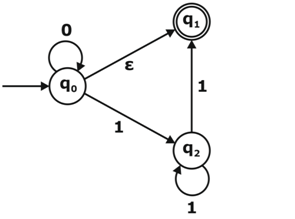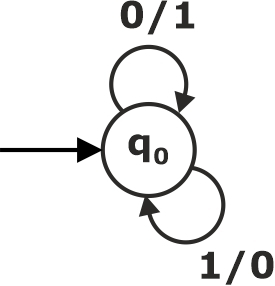Time Left - 24:00 mins
Subject Revision Quiz-3
Attempt now to get your rank among 242 students!
Question 1
Consider the following relation schema:
R1 = {A, C, D}, R2 = {B, E, F}, R3 = {A, B, G}.
What is the highest NF the schema satisfies?
R1 = {A, C, D}, R2 = {B, E, F}, R3 = {A, B, G}.
What is the highest NF the schema satisfies?
Question 2
Consider the relation scheme
<(ABCD), {AB →C, C → A}>
The decomposition obtained finally by above relation scheme is in
<(ABCD), {AB →C, C → A}>
The decomposition obtained finally by above relation scheme is in
Question 3
Which of the following statement is wrong?
I. 2-phase locking protocol suffer from dead lock.
II. Time stamp protocol suffer from more aborts.
III. A block hole in a DFD is a data store with only inbound flows.
IV. Multivalued dependency among attribute is checked at 3 NF level.
V. An entity-relationship diagram is a tool to represent event model.
I. 2-phase locking protocol suffer from dead lock.
II. Time stamp protocol suffer from more aborts.
III. A block hole in a DFD is a data store with only inbound flows.
IV. Multivalued dependency among attribute is checked at 3 NF level.
V. An entity-relationship diagram is a tool to represent event model.
Question 4
Which of the following statements is true?
Question 5
An index record appears for every search key value in a file and a pointer to the record. This is example for
Question 6
Which of the following is true?
Question 7
Consider the following relations:
R(A B) A primary key
S(C B) C primary key and “B” foreign key references to S and no NULL values in both relations and both R and S consists more than two records. Which of the following statement is false?
Question 8
Which of the following schedule(s) is conflict serializable?
Question 9
The property of a transaction that persists all the crashes is
Question 10
Consider the following way of retrieving the data from the database:
1) TRC
2) DRC
3) SQL
4) RA
Which of the following has same power regarding queries?
1) TRC
2) DRC
3) SQL
4) RA
Which of the following has same power regarding queries?
Question 11
The number of final states required to accept Φ in minimal finite automata?
Question 12
The graphical representation of the transition of finite automata is _____.
Question 13
A minimal DFA that is equivalent to a NDFA has:
Question 14
Consider the following DFA:

Which of the following represents number of states needed for minimal DFA for (L(M) AND L(N))?
Question 16
Let L = {(ap)* | p is a prime number} and ![]() How many minimum number of states in NFA that accepts a language L?
How many minimum number of states in NFA that accepts a language L?
Question 17
Which of the following statements are true?


- ε accepted by NFA
- 11 accepted by NFA
- 101 accepted by NFA
- 000 accepted by NFA
Question 18
How many strings of length less than 4 contains the language described by the regular expression (x+y)*y(a+ab)*?
Question 19
Which of the following is equivalent regular expressions?
(i) ((01)*(10)*)*
(ii) (10 + 01)*
(iii) (01)* + (11)*
(iv) (0* + (11)* + 0*)*)
Question 20
Consider the following problems:
A) If A is a recursive language, then A’ is also recursive
B) If A is a regular language, then A’ is also regular
C) If A is a recursive enumerable language, then A’ is also recursive enumerable
D) If A is context-free, then A’ is also context-free
Which one of the above problems is decidable?
A) If A is a recursive language, then A’ is also recursive
B) If A is a regular language, then A’ is also regular
C) If A is a recursive enumerable language, then A’ is also recursive enumerable
D) If A is context-free, then A’ is also context-free
Which one of the above problems is decidable?
- 242 attempts
- 0 upvotes
- 2 comments
Nov 22GATE & PSU CS


